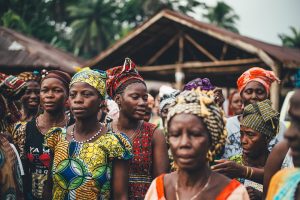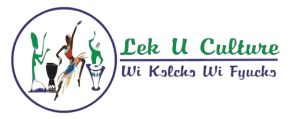Below is a detailed overview of Sierra Leone’s major ethnic groups. There are around 16–18 tribes, each with its own language, traditions, and cultural identity. This summary includes their distribution, population share, socio-economic roles, and cultural highlights.

1. Temne
- Population & Regions: Largest group (~35.4%) in Northern Province and Freetown environs (rightforeducation.org).
- Religion: Predominantly Muslim, with a small Christian minority (rightforeducation.org).
- Language: Temne (Mel family), plus Krio and English for many.
- Culture & Economy: Strong farming tradition (rice, groundnuts), secret societies, leadership in local politics (APC supporters).
2. Mende
- Population & Regions: Second-largest (~30.8%) in Southern & Eastern regions, especially Bo, Kenema, Moyamba (cia.gov, tourismsierraleone.com, en.wikipedia.org).
- Religion & Society: Majority Muslim (~68%) with a sizable Christian minority (~30%) (en.wikipedia.org). Engage in Sande (female) & Poro (male) secret societies.
- Livelihood: Farming and hunting; politically influential (SLPP supporters).
3. Limba
- Population & Regions: About 8.8%, indigenous to Northern Province (Bombali, Koinadugu, Kambia) (tourismsierraleone.com, en.wikipedia.org, en.wikipedia.org).
- Culture: Non-Mande Mel language; community cohesion via secret societies.
- Economy: Farming staple crops; historically trafficked during colonial slave trade (en.wikipedia.org).
4. Kono
- Population & Regions: ~4.3%, centred in diamond-rich Kono District (en.wikipedia.org).
- Language: Kono (Mande).
- Economy: Primarily diamond mining and subsistence farming.
5. Koranko (Kuranko)
- Population & Regions: ~4%; found in northern districts like Kabala and Falaba (cia.gov, rightforeducation.org).
- Culture: Mande-speaking; secret societies (Bondo, male circumcision rites).
- Social Structure: Polygamous farming communities with puberty rites (en.wikipedia.org).
6. Fula (Fullah)
- Population & Regions: ~3.8–4.4%, largely in Western and Northern areas .
- Heritage: Descended from Fulani migrants from Guinea/Senegal; pastoralist roots.
- Language & Religion: Speak Fula; overwhelmingly Muslim.
- Economy: Cattle herders, traders, and known for distinctive dress.
7. Mandingo (Mandinka)
- Population & Regions: ~2.8–5%, spread across Koinadugu, Kono, Bombali (rightforeducation.org, loispiration.com, tourismsierraleone.com, en.wikipedia.org).
- Heritage: Mande-speaking; arrived via Mali Empire; traders and clerics.
- Religion: Over 99% Muslim; strong Islamic scholarly tradition (Maliki school) (en.wikipedia.org).
- Culture: Oral tradition via griots; renowned for kora music.
8. Loko
- Population & Regions: ~2.0%, in Bombali, Port Loko, Regent area (en.wikipedia.org, en.wikipedia.org).
- Language: Loko (Southwestern Mande).
- Culture: Participate in secret societies; farming and hunting; matri- patrilineal systems.
9. Sherbro
- Population & Regions: ~1.9%, located in coastal southwest and Sherbro Island (tourismsierraleone.com, cia.gov).
- Language: Sherbro (Kru-Mel group).
- Economy: Fishing, coastal trade; historically allied with European traders.
- Religion: Largely Christian due to European influence.
10. Creole (Krio)
- Population & Regions: ~1.2%, centered in Freetown and Western Area (lekuculture.com).
- Heritage: Descendants of freed slaves from America, Caribbean, Africa.
- Language & Influence: Speak Krio, an English-based lingua franca; critical in government, education, judiciary.
11. Susu & Yalunka
- Population & Regions: Minority groups, mostly in North, near Guinea border (wathi.org).
- Language: Susu (Mande), Yalunka (Mande).
- Culture: Islamic, farming communities with distinct music, dress.
12. Kissi
- Population & Regions: Minority in Eastern Province near Liberia/Guinea (en.wikipedia.org, en.wikipedia.org).
- Culture: Mande-speaking; agricultural and cross-border ethnic ties.
13. Vai
- Population & Regions: Small; located in Southeastern border area (en.wikipedia.org).
- Language: Vai (Mande); literacy via indigenous syllabary.
- Economy: Fishing, farming; share cultural bonds with Liberian Vai.
14. Kru
- Population & Regions: Coastal minority around Freetown peninsula vicinity (vero-westafrika.com).
- Language: Kru languages (Mel family).
- Culture: Coastal fishing communities, boat-building traditions.
15. Oku
- Population & Regions: ~0.5%, settlements in Freetown (Fourah Bay, Aberdeen) (en.wikipedia.org).
- Heritage: Descendants of Yoruba Liberated Africans (Muslim cleric class).
- Language & Religion: Yoruba, Krio, English; Sunni Islam (en.wikipedia.org).
- Culture: Strong Islamic identity, Ajami literacy, clitoral cutting practices.
16. Kissi, Bullom, Krim, and Kroo
- Populations & Regions:
- Bullom/Krim: Coastal southern communities.
- Kroo: Coastal fishermen and traders near Freetown (wathi.org).
- Languages: Mel language family.
🧭 Other Minor Groups
- Lebanese & Indian traders in urban centers (non-indigenous).
- Ethnic fluidity and intermarriage common; overlapping religious identities.
🔍 Statistical Snapshot (CIA/IndexMundi 2023)
| Ethnic Group | % of Population |
|---|---|
| Temne | 35.4% |
| Mende | 30.8% |
| Limba | 8.8% |
| Kono | 4.3% |
| Koranko | 4.0% |
| Fula | 3.8% |
| Mandingo | 2.8% |
| Loko | 2.0% |
| Sherbro | 1.9% |
| Creole | 1.2% |
| Others | ~5% (Susu, Yalunka, Kissi, Vai, Kru, Oku, etc.) (wathi.org, en.wikipedia.org) |
Cultural Themes Across Ethnic Groups
- Languages: Wide diversity—Temne/Mende widely used; Krio is the national lingua franca; English speaks in official spheres.
- Secret Societies: Sande, Poro, Bondo, etc. play central roles in initiation, social regulation, and cultural transmission.
- Religion: Majority Islam (~77%), Christian minority (~23%) (cia.gov, tourismsierraleone.com); religious tolerance and blended practices common.
- Livelihoods: Subsistence farming, fishing, mining, trading, artisanal crafts.
- Urban Migration: Groups like Limba, Loko, and Yoruba-derived Oku have vibrant communities in Freetown.
Why This Matters
Understanding Sierra Leone’s ethnic landscape is essential for appreciating its:
- Political dynamics (e.g., SLPP vs APC alignments along ethnic lines).
- Social cohesion, as shared languages and intermarriage bridge divides.
- Cultural richness, with languages, music (Mende Poro drumming, Mandinka kora), and secret rituals enhancing national identity.
This overview captures the major tribes and their distinct contributions to Sierra Leone’s national fabric. If you’d like to explore any group in greater depth—such as traditions, political influence, or social structure—just let me know!





